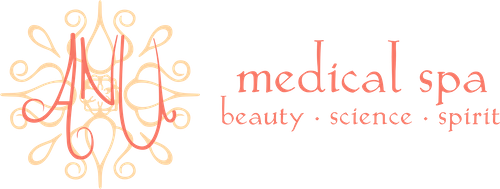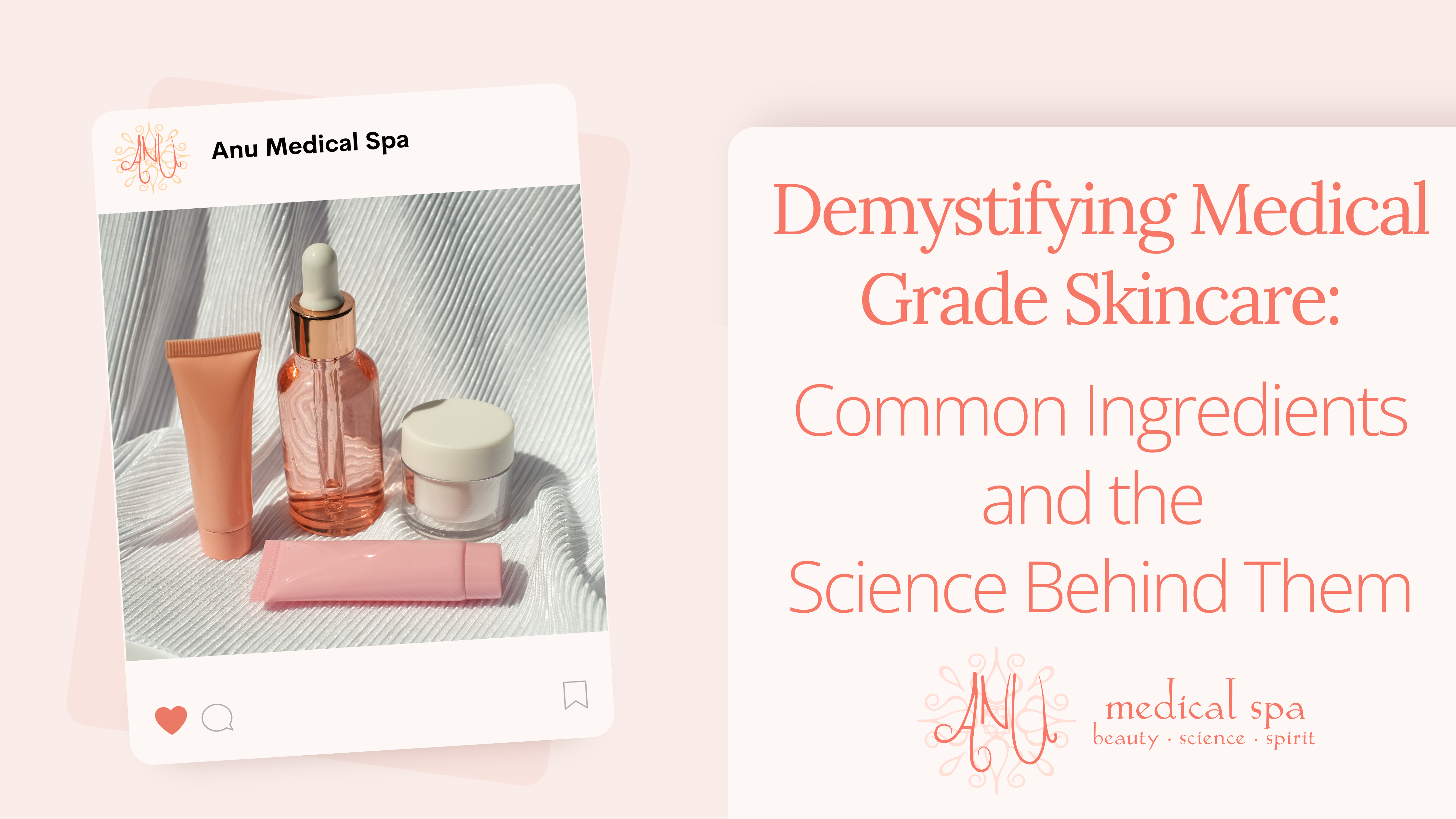In the world of skincare, particularly when it comes to medical-grade products, understanding the ingredients can help you make informed decisions about your skincare regimen. Medical-grade skincare products often contain higher concentrations of active ingredients compared to over-the-counter products, offering targeted solutions for various skin concerns. In this blog post, we’ll break down some of the most common ingredients found in medical-grade skincare and delve into the science behind each one.
- Hyaluronic Acid
What It Is: Hyaluronic acid is a naturally occurring substance in the skin known for its incredible ability to retain moisture.
Science Behind It: Hyaluronic acid acts as a humectant, drawing water from the environment into the skin. It can hold up to 1,000 times its weight in water, which helps to hydrate and plump the skin. By maintaining hydration, it also helps to reduce the appearance of fine lines and wrinkles.
Common Uses: Moisturizers, serums, and fillers.
- Retinoids (Retinol, RetinA, Tretinoin)
What They Are: Retinoids are derivatives of Vitamin A and are known for their potent effects on skin cell turnover.
Science Behind It: Retinoids accelerate cell turnover by promoting the shedding of old, dead skin cells and stimulating the production of new ones. This process helps to improve skin texture, reduce hyperpigmentation, and minimize fine lines and wrinkles. Retinoids also increase collagen production, which contributes to a firmer, more youthful appearance.
Common Uses: Anti-aging treatments, acne treatments, and pigmentation correction.
- Vitamin C (Ascorbic Acid)
What It Is: Vitamin C is a powerful antioxidant that helps protect the skin from oxidative stress and environmental damage.
Science Behind It: Vitamin C neutralizes free radicals, which are unstable molecules that can cause cellular damage and accelerate aging. It also plays a crucial role in collagen synthesis, which helps to improve skin elasticity and reduce the appearance of fine lines. Additionally, Vitamin C can help to lighten hyperpigmentation and even out skin tone.
Common Uses: Serums and brightening creams.
- Niacinamide (Vitamin B3)
What It Is: Niacinamide is a versatile ingredient known for its ability to improve the skin’s barrier function.
Science Behind It: Niacinamide enhances the skin’s natural barrier by increasing ceramide production, which helps to retain moisture and protect against environmental irritants. It also has anti-inflammatory properties, making it beneficial for conditions like acne and rosacea. Niacinamide can help to brighten the skin and even out skin tone by inhibiting melanin production.
Common Uses: Serums, moisturizers, and treatment products for acne and hyperpigmentation.
- Alpha Hydroxy Acids (AHAs) (Glycolic Acid, Lactic Acid)
What They Are: AHAs are water-soluble acids derived from fruits and milk that exfoliate the skin’s surface.
Science Behind It: AHAs work by breaking down the bonds between dead skin cells, which helps to exfoliate the skin and reveal a smoother, brighter complexion. They also help to improve skin texture, reduce the appearance of fine lines, and increase moisture retention. Glycolic acid, derived from sugar cane, is particularly effective due to its small molecular size, allowing it to penetrate deeply into the skin.
Common Uses: Exfoliating masks, peels, toners and cleansers.
- Beta Hydroxy Acids (BHAs) (Salicylic Acid)
What It Is: BHAs are oil-soluble acids that penetrate into the pores to help with acne and congestion.
Science Behind It: Salicylic acid, a common BHA, exfoliates the skin by dissolving the bonds between dead skin cells and unclogging pores. It has anti-inflammatory properties that can help to reduce redness and swelling associated with acne. Additionally, salicylic acid can help to regulate sebum production, making it particularly effective for oily and acne-prone skin.
Common Uses: Acne treatments, exfoliating cleansers, and spot treatments.
- Peptides
What They Are: Peptides are short chains of amino acids that are essential for various skin functions.
Science Behind It: Peptides act as signaling molecules that help to stimulate collagen and elastin production in the skin. By enhancing the skin’s structural support, peptides can improve firmness and elasticity, reduce the appearance of wrinkles, and promote overall skin health. Different peptides can also target specific concerns, such as reducing inflammation or boosting hydration.
Common Uses: Anti-aging creams, serums, and eye treatments.
- Ceramides
What They Are: Ceramides are lipid molecules found naturally in the skin that play a crucial role in maintaining the skin barrier.
Science Behind It: Ceramides help to form a protective barrier on the skin’s surface, preventing moisture loss and shielding against environmental pollutants and irritants. They are essential for maintaining the skin’s hydration levels and overall integrity. Replenishing ceramides in the skin can improve texture, reduce dryness, and enhance the skin’s ability to repair itself.
Common Uses: Moisturizers, barrier repair creams, and hydrating serums.
Conclusion
By incorporating products with these scientifically-backed ingredients, you can achieve healthier, more radiant skin. At Anu Medical Spa, we’re committed to providing personalized skincare solutions tailored to your needs. If you have any questions about which ingredients are right for you, or if you need recommendations for medical-grade skincare products, don’t hesitate to reach out. Our team of experts is here to help you navigate your skincare journey with confidence.


